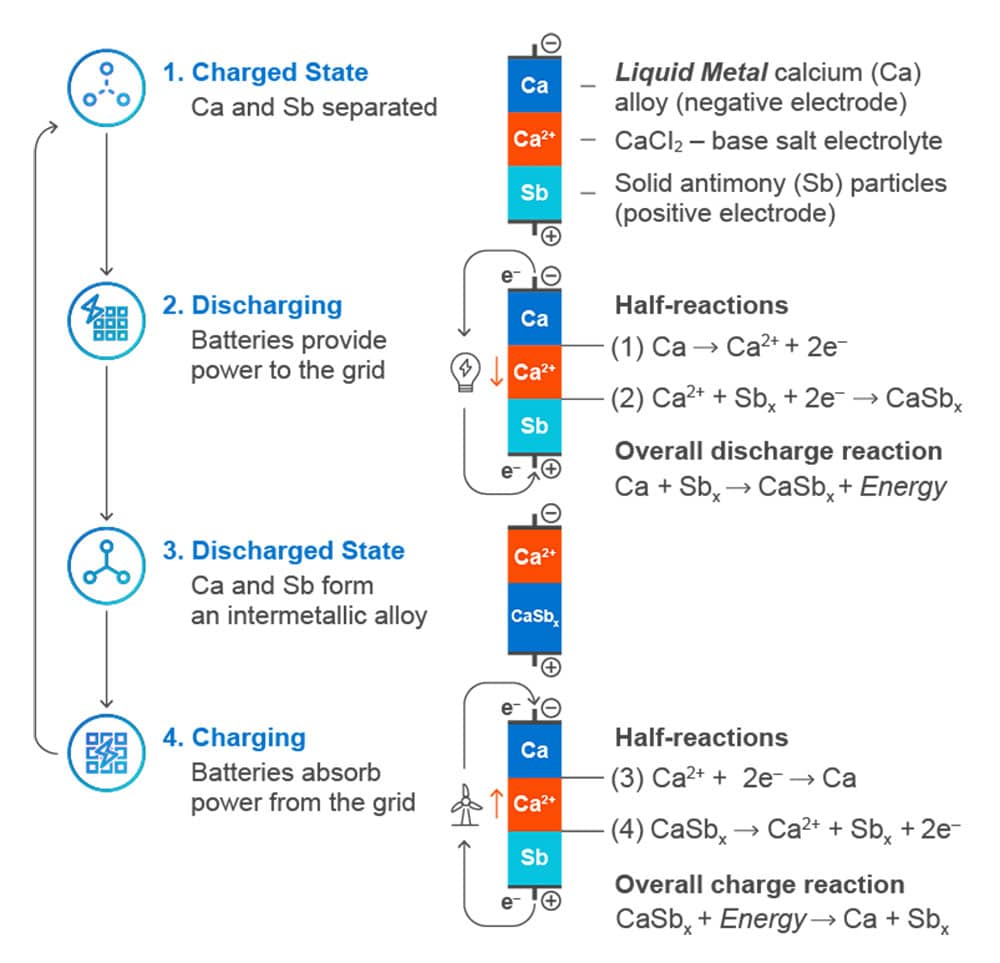Renewable energy is advantageous to us in many ways, and it is a non-emission-polluting energy source that uses natural resources such as solar, wind, hydropower, biomass, etc., to generate energy. However, there is still a problem with long-term energy storage systems that can support the grid during times of intermittency. Lithium-ion battery-based could have been a solution for this purpose, but it has high energy storage cost.
To overcome this problem, a few years ago, Professor Donald Sadoway and David Bradwell of Massachusetts Institute of Technology (MIT) developed a liquid metal battery technology that is low-cost, high-capacity, efficient, long-lasting, and easy to manufacture. It is ideal for storing electricity on the power grid.
In 2010 Donald Sadoway, David Bradwell, and Luis Ortiz co-founded Liquid Metal Battery Corporation with seed money from Bill Gates and the French energy company Total SA. The offices were in Cambridge, Massachusetts, so they named the company Ambri.
More than a decade later, Ambri’s liquid metal-based energy storage solution got the UL 1973 certification that allows it to be used for stationary and motive auxiliary power applications after successfully complying with the applicable requirements of the standard.
“The certification marks a major milestone for the commercialization of our Liquid Metal battery technology by giving the seal of approval that our next generation, double capacity cells meet the highest safety standards,” said David Bradwell, Chief Technology Officer, and Co-Founder at Ambri. “Our recently announced collaboration with Xcel Energy will showcase the high performance of this next-generation cell and sends a message to the industry that our technology is advancing to meet market and customer demands without compromising safety and reliability.”
Ambri’s liquid-metal battery consists of a light calcium alloy anode, a calcium chloride salt electrolyte, and a molten antimony cathode. At the time of discharge, the calcium anode releases calcium ions that pass through the electrolyte to the cathode, forming a calcium-antimony alloy, a process reversed during charging.

Recently AMBRI and Xcel Energy have collaborated to construct a 300kWh system at SolarTAC in Aurora, Colorado, for 12 months. This system includes Ambri’s next-generation battery cells, which double the energy capacity of its previous cells.
The system is expected to be fully operational by next year. It will use the GridNXT microgrid platform to facilitate the use of multiple generation sources.
Microsoft has chosen Ambri to deploy its Liquid MetalTM energy storage system to reduce Microsoft’s reliance on diesel as part of Microsoft’s commitment to being carbon negative. This will allow access to continuous renewable energy and ancillary services markets from any source.
After achieving the UL 1973 certification, Ambri will continue to pursue additional UL Solutions certifications as it expands into new markets and delivers additional projects.
